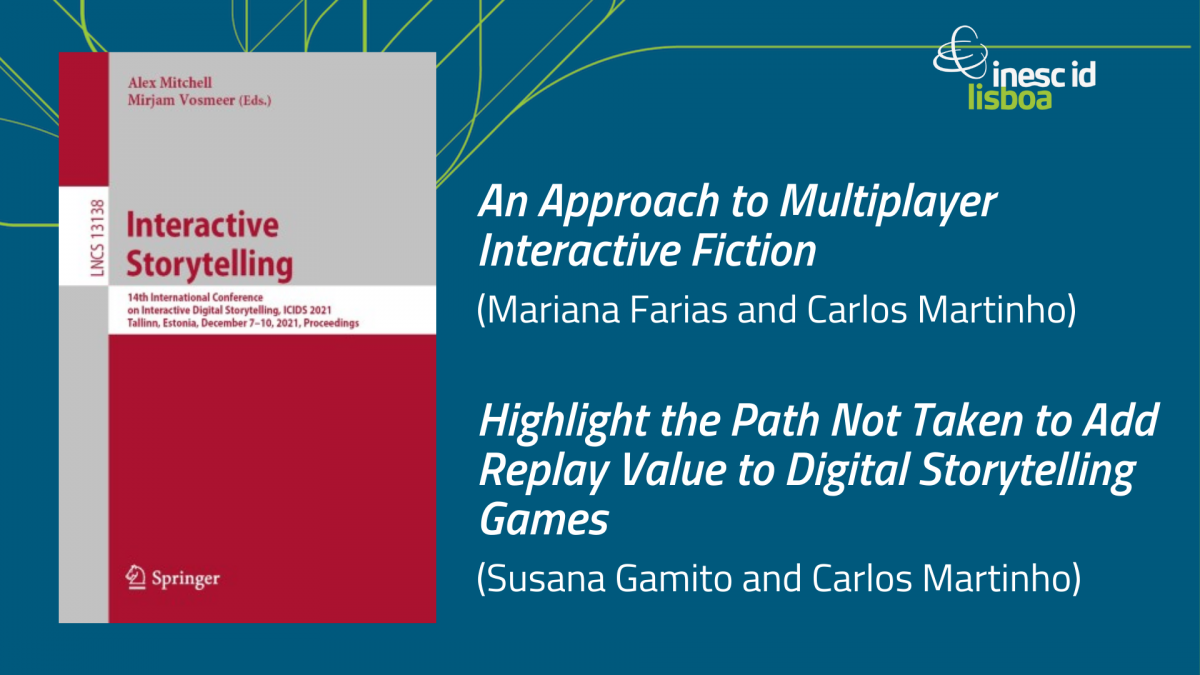
On games and tales: two papers in “Interactive Storytelling”
What is the role of storytelling when multiple players are interacting? That question drove two back-to-back research papers recently authored by INESC-ID researchers – Mariana Farias, Susana Gamito and Carlos Martinho, members of the Artificial Intelligence for People and Society (AIPS) Research Area – in Interactive Storytelling, the proceedings of the 14th International Conference on Interactive Digital Storytelling, ICIDS 2021.
In An Approach to Multiplayer Interactive Fiction, Mariana Farias and Carlos Martinho generated an interactive fiction experience for two players where both were protagonists of a story while embodying different characters. That experience incorporated the need to guide the players’ attention, significantly improving the fictional experience while helping them follow the story. “It’s very interesting to see how new and innovative ways of interaction are emerging within the field of interactive storytelling,” Farias commented, adding that she is “very excited to see what new experiences we will have in the future that deviate from the classical text format of presenting these stories and to explore what new ways, choices and actions that influence the course of the story can be made within the medium.”
In their paper, Susana Gamito and Carlos Martinho looked at those decision-making moments that open multiple narrative doors within an interactive storytelling format. In Highlight the Path Not Taken to Add Replay Value to Digital Storytelling Games, Gamito and Martinho used the psychology of regret to look at how players reflect upon their choices and replay a game. By highlighting the path not taken, Gamito and Martinho showed that the game experience could be improved by indicating to players the alternative of what could have been. On their paper, Carlos Martinho commented that “In spite of – in the specific case of this work – being applied to the domain of digital games, the metaphor of interactive narrative has a more transversal importance to human behavior. It is often by telling stories that we explain our surroundings and communicate our ideas.” Martinho also highlighted that “Understanding better how our behavior, in the context of this metaphor, varies from person to person and is sensitive to certain forms of communication, can inform or even pave the way for new formats of interaction between humans and machines. In the case of digital entertainment, it can help to create enriched experiences by adapting to the individual needs of each user, which is one of the main lines of research on which this work is anchored.”
Investigating AI systems (agents, robots, etc.) that are social and pro-social — with research work that spans many different topics in affective computing, planning, games & interactive storytelling, robotics, evolutionary game theory and machine learning — AIPS is one of the eleven Research Areas that make up the research tissue of INESC-ID, covering a wide range of topics in computer science and engineering and electrical and computer engineering. You can learn more about the INESC-ID Research Areas here.
